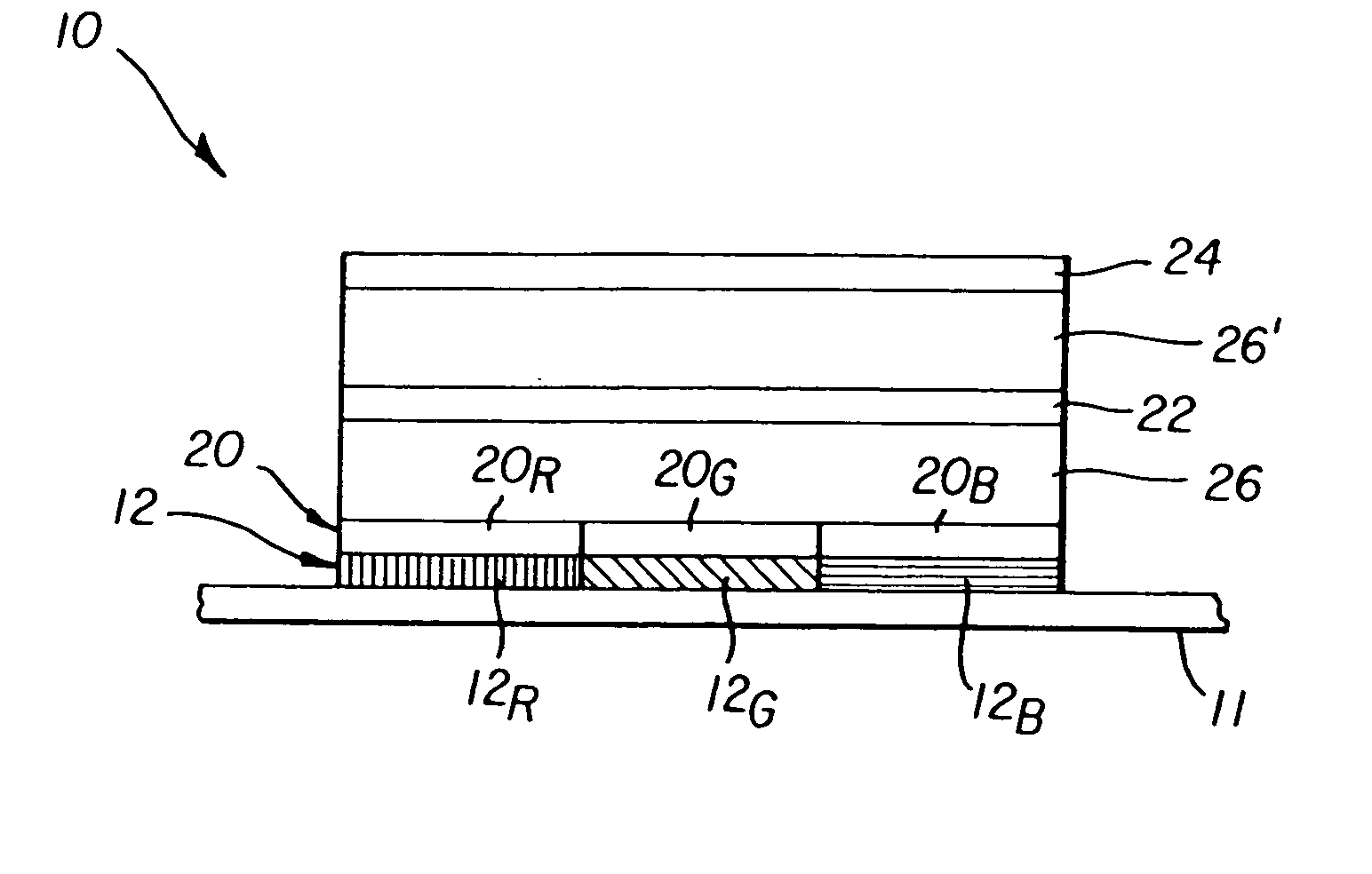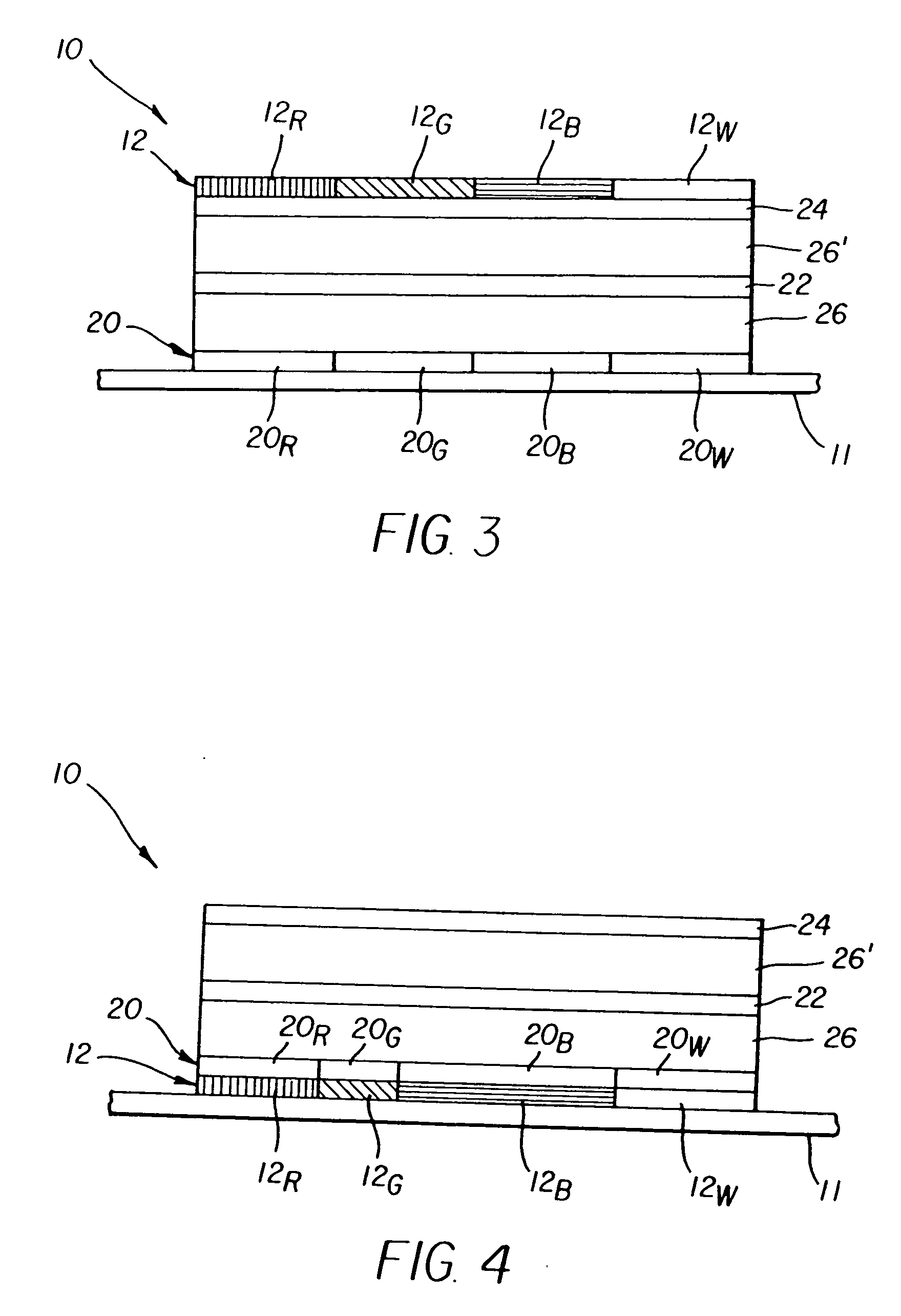Stacked OLED display having improved efficiency
a technology of oled display and efficiency, applied in the field of oled color display, can solve the problems of reducing the lifetime or reducing the resolution compared to a prior art three, reducing the efficiency of pixels in the display, and imai design not providing increased power efficiency for emissive full color display, etc., to achieve the effect of improving lifetime and power efficiency and simple construction
- Summary
- Abstract
- Description
- Claims
- Application Information
AI Technical Summary
Benefits of technology
Problems solved by technology
Method used
Image
Examples
Embodiment Construction
[0020] Referring to FIG. 1, a bottom emitting OLED device according to the present invention includes a color pixel 10 located on a substrate 11 having a filter layer 12 including a plurality of light transmissive filters 12R, 12G, 12B for transmitting red, green and blue light respectively. A first patterned electrode layer 20 defines a corresponding plurality of separately addressable electrodes 20R, 20G and 20B. A first layer of white light emitting OLED material 26 is disposed over electrode layer 20. A second layer of white light emitting OLED material 26′ is electrically connected in series with the first layer through a transparent doped organic conductor layer 22. A second electrode layer 24 defines a single electrode coextensive with the plurality of color filters. First electrode layer 20 is transparent and second electrode layer 24 may be reflective. Transparent electrodes are well known in the art and, for example, may be made of indium tin oxide (ITO) or thin layers of ...
PUM
 Login to View More
Login to View More Abstract
Description
Claims
Application Information
 Login to View More
Login to View More - R&D
- Intellectual Property
- Life Sciences
- Materials
- Tech Scout
- Unparalleled Data Quality
- Higher Quality Content
- 60% Fewer Hallucinations
Browse by: Latest US Patents, China's latest patents, Technical Efficacy Thesaurus, Application Domain, Technology Topic, Popular Technical Reports.
© 2025 PatSnap. All rights reserved.Legal|Privacy policy|Modern Slavery Act Transparency Statement|Sitemap|About US| Contact US: help@patsnap.com



